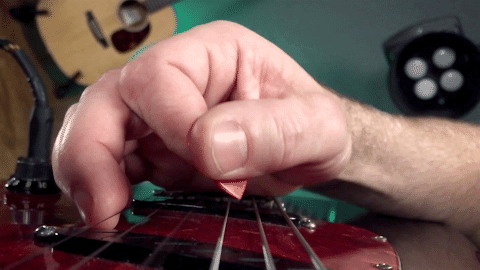It’s a little more complicated than that — I apologize ahead of time for nit picking!
Pickslanting is an important component of picking technique. The path of the motion is the escape. The orientation of the pick (in one of its axes) is the pickslant. These two need to work together or you’ll get garage spikes. This is why some picking motions are only possible with certain forms.
For example Bill is doing USX. There is almost no way to do a USX tremolo without a downward pickslant. So in this case I think “downward pickslanting” is an OK shorthand for these kinds of techniques since those two things are almost always found together. e.g. You could call a Gypsy player a downward pickslanting player since it’s accurate — they do indeed use a downward pickslant. It doesn’t describe everything about their technique, but it’s accurate for what it does describe (the pickslant).
Where we’ve had confusion in the past is not knowing that the pickslant and the escape motion are two different things. We had players that want to play Eric Johnson lines, so they would do something with their form or grip to make the pick “appear slanted”. This by itself won’t create USX motion, so they would try to play fast and the motion would just become whatever motion they already know — usually elbow or wrist DSX. Hence the ultra common “failure to USX” problem which we have seen many times.
As long as you know these things are separate, and you’re doing what you need to do to learn the technique, that’s what really matters.




 ) I didn’t feel any sort of elbow movement when I was doing it yesterday. I do know the more relaxed I am the easier the motion is. It feels so much different than my other motions but it feels really easy to do.
) I didn’t feel any sort of elbow movement when I was doing it yesterday. I do know the more relaxed I am the easier the motion is. It feels so much different than my other motions but it feels really easy to do.